| Designation: | STRYKER ICV |
 |
|---|---|---|
| Manufacturer: | General Dynamics Land Systems - GDLS | |
| Product type: | Armoured Vehicles | |
| Name: | Wheeled armoured personnel carrier |
The IAV Stryker is a family of eight-wheeled, 4+4-wheel-drive, armored fighting vehicles derived from the Canadian LAV III and produced by General Dynamics Land Systems, in use by the United States Army. The vehicle is named for two American servicemen who posthumously received the Medal of Honor: Pfc Stuart S. Stryker, who died in World War II and Spc4 Robert F. Stryker, who died in the Vietnam War.
The U.S. Army is seeking replacement of the M113 APC and derivatives by Stryker, MRAP, and Bradley Fighting Vehicle vehicles starting in 2017. In the long term the army is tentatively pursuing replacement with the 50+ ton Ground Combat Vehicle family of vehicles concept.
The Stryker is based on the LAV III light-armored vehicle, which in turn was based on the Swiss MOWAG Piranha III 8x8.
The vehicle comes in several variants with a common engine, transmission, hydraulics, wheels, tires, differentials and transfer case. The M1130 Command Vehicle and M1133 Medical Evacuation Vehicle have an air conditioning unit mounted on the back. The medical vehicle also has a higher-capacity generator. A recent upgrade program provided a field retrofit kit to add air conditioning units to all variants, and production started in 2005 of the Mobile Gun System mounting an overhead GDLS 105 mm automatic gun.
For its power pack the Stryker uses a Caterpillar diesel engine common in U.S. Army medium-lift trucks, eliminating additional training for maintenance crews and allowing the use of common parts. Because of obsolescence concerns, the Caterpillar 3126 engine was recently replaced by a Caterpillar C7 engine and the Allison 3200SP.
Pneumatic or hydraulic systems drive almost all of the vehicle's mechanical features; for example, a pneumatic system switches between 8X4 and 8X8 drive.
Designers strove to ease the maintainer's job, equipping most cables, hoses, and mechanical systems with quick-disconnecting mechanisms. The engine and transmission can be removed and reinstalled in approximately two hours, allowing repairs to the turbocharger and many other components to be done outside the vehicle.
Extensive computer support helps soldiers fight the enemy while reducing friendly fire incidents. Each vehicle can track friendly vehicles in the field as well as detected enemies. The driver and the vehicle commander (who also serves as the gunner) have periscopes that allow them to see outside the vehicle without exposing themselves to outside dangers. The vehicle commander also has access to a day-night thermal imaging camera which allows the vehicle commander to see what the driver sees. The vehicle commander has almost a 360-degree field of vision; the driver, a little more than 90 degrees.
Soldiers can practice training with the vehicles from computer training modules inside the vehicle.
General Dynamics Land Systems is developing a new Power and Data Management Architecture to handle computer upgrades.
The Stryker's hull is constructed from high-hardness steel which offers a basic level of protection against 14.5mm rounds on the frontal arc, and all-around protection against 7.62mm ball ammunition. In addition to this, Strykers are also equipped with bolt-on ceramic armor which offers all-around protection against 14.5mm, armor-piercing ammunition, and artillery fragments from 152mm rounds. Problems were encountered with the initial batch of ceramic armor when it was found that a number of panels failed in tests against 14.5mm ammunition. Army officials determined that this was due to changes in the composition and size of the panels introduced by their manufacturer, IBD Deisenroth. A stopgap solution of adding an additional 3mm of steel armor was introduced until a permanent solution could be found. The issue was eventually resolved later in 2003 when DEW Engineering was selected as the new, exclusive supplier for the ceramic armor.
In addition to the integral ceramic armor, optional packages have been developed. These include slat armor and Stryker reactive armor tiles (SRAT) for protection against rocket propelled grenades and other projectiles, the hull protection kit (HPK), armored skirts for additional protection against improvised explosive devices, and a ballistic shield to protect the commander's hatch.
The Stryker also incorporates an automatic fire-extinguishing system with sensors in the engine and troop compartments that activate one or more halon fire bottles, which can also be activated by the driver, externally mounted fuel tanks, and a CBRN (Chemical, Biological, Radiological, Nuclear) Warfare system which will keep the crew compartment airtight and positively pressurized.
There are plans to add the Boomerang anti-sniper system and Raytheon Quick Kill anti-RPG system.
Reports from military personnel and analysts state that the Stryker is superior to other light military vehicles regarding survivability against IEDs (improvised explosive devices).
With the exception of some specialized variants, the primary armament of the Stryker is a Protector M151 Remote Weapon Station with .50-cal M2 machine gun, 7.62 mm M240 machine gun, or Mk-19 automatic grenade launcher. The choice of armament was driven by many factors. The US Army wanted a vehicle that could rapidly transport and protect infantry to and around battlefields. Heavier armed infantry transport was introduced with the Soviet BMP series in the late 1960s. Vehicles armed in this manner are intended to be used in an assault against an enemy position. However, this also adds weight to the vehicle due to the additional armor, and reduces the number of infantry that could be transported when used with a conventional manned turret as a turret basket is necessary.
The unit cost to purchase the initial Stryker ICVs (without add-ons, including the slat armor) was US$3 million in April 2002. By May 2003, the regular production cost per vehicle was US$1.42 million.
The Stryker chassis' modular design supports a wide range of variants. The main chassis is the Infantry Carrier Vehicle (ICV). There have been no proposals yet for an Air Defense variant along the lines of LAV-25 LAV-AD Blazer turret, M6 Linebacker or AN/TWQ-1 Avenger vehicles.
The Stryker vehicles have the following configurations:
- M1126 Infantry Carrier Vehicle (ICV) : Armored personnel carrier version that provides protected transport for 2 crew and a 9 man infantry squad, and can support dismounted infantry. Weighs 19 tons, communications include text and a map network between vehicles. It can be armed with 0.50 inch M2 Browning machine gun, 40 mm MK19 grenade launcher or 7.62 mm M240 machine gun.
- M1127 Reconnaissance Vehicle (RV) used by RSTA Squadrons and battalion scouts, moving throughout the battlefield to gather and transmit real time intelligence/surveillance for situational awareness. The RV's purpose is to anticipate and avert threats, improving the brigade's decisiveness and freedom of maneuver.
- M1128 Mobile Gun System (MGS) : Version armed with an 105 mm M68A1 rifled cannon (M68A1E4) (a lightweight version of the gun system used on the original M1 Abrams main battle tanks and the M60 Patton main battle tank), an M2 0.50 caliber commander's machine gun and two M6 smoke grenade launchers. The M68A1E4 also features a muzzle brake to assist with recoil and an autoloader, a rare feature on US tank guns. The main gun provides direct fires in support of infantry, engaging stationary and mobile enemy targets, such as bunkers to create a combined arms effect of overmatched firepower that improves survivability of the combat team. The MGS can fire one of its 18 ready 105 mm shells every 6 seconds, and carries 400 rounds of 0.50 caliber and 3,400 rounds of 7.62 mm, and the same C4ISR communications and driver's vision as the ICV. The MGS vehicle is a strengthened variant of the LAV III compared to the standard variant other Stryker vehicles are based on, but retains commonality across all vehicles in the family.
- M1129 Mortar Carrier (MC) armed with Soltam 120 mm Mortar supports infantry with screening obscurants, suppressive forces and on-call supporting fires (HE, illumination, IR illumination, smoke, precision guided, and DPICM cluster bombs). Precision Guided Mortar Munition (PGMM) attacks point targets at extended ranges with GPS guidance. Organic mortars provide responsive fire support to the maneuver commander and are an ideal system for indirect fire in complex terrain. Vehicles at battalion level also carry the 81mm mortar for dismounted use, while company mortar vehicles carry the 60mm mortar.
- M1130 Command Vehicle (CV) provides commanders with communication, data, and control functions to analyze and prepare information for combat missions; can also link to aircraft antenna/power for planning missions while enroute aboard aircraft. Situational awareness helps commanders to coordinate widely dispersed mobile units against decisive enemy points. Deployed as 3 vehicles per brigade HQ, 2 per battalion HQ and 2 per infantry company.
- M1131 Fire Support Vehicle (FSV) is organic to maneuver companies and provides surveillance and communications (4 secure combat radio nets), with target acquisition/identification/tracking/designation being transmitted automatically to the shooting units.
- M1132 Engineer Squad Vehicle (ESV) provides mobility and limited counter mobility support. Integrated into the ESV are obstacle neutralization and lane marking systems and mine detection devices. The ESV with its attachments provides a partial solution to the obstacle clearance role, primarily for clearance of hastily emplaced mines on hard surfaces and rubble, plus will enable the Engineer squad to control future robotic based systems.
- M1133 Medical Evacuation Vehicle (MEV) is the Battalion Aid Station for brigade units, providing treatment for serious injury and advanced trauma as an integrated part of the internetted combat forward formation. attendant’s seat that will allow the attendant to change position and visually monitor all patients while the vehicle is in motion. Medical personnel must be seated for safety while the vehicle is in motion, but able to visually monitor patients. Geneva Convention markings can be masked/removed as required.
- M1134 Anti-Tank Guided Missile Vehicle (ATGM) is armed with the TOW missile to reinforce the brigade's infantry and reconnaissance, providing long-range antitank fires against armour beyond tank gun effective range. The separate antitank company can alsobe used to shape the battlefield, reinforce the infantry battalions and reconnaissance squadron (e.g. counter-reconnaissance), serve as a reserve, and of course may counterattack. Vehicle commander independently locates secondary targets while gunner is engaging the primary. After ready rounds are fired, crewman will need to rearm the launcher. A vehicle commander, gunner, loader, and driver operate the ATGM in a tactical environment and to carry equipment if the missile launcher is used in a dismounted mode.
- M1135 Nuclear, Biological, Chemical, Reconnaissance Vehicle (NBC RV) automatically integrates contamination information from detectors with input from navigation and meteorological systems and transmits digital NBC warning messages to warn follow-on forces. The core of the NBC RV is its on-board integrated NBC sensor suite and integrated meteor-ological system. An NBC positive overpressure system that minimizes cross-contamination of samples and detection instruments, provides crew protection, and allows extended operations at MOPP 0.
- Self-Propelled Howitzer (SPH) This was a prototype vehicle with turret and ammunition developed by Denel Land Systems. Work stopped after the successful November 2005 demonstration of the prototype.
|
||||||||||||||||||||||||
|
||||||||||||||||||
|
|||||||||||||||||||||||||||||||||||||||||||||||||||||||||||||||||
All contracts...
 |
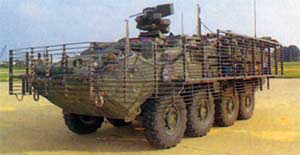 |
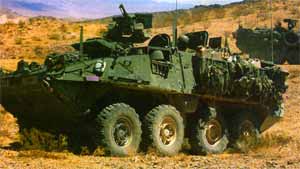 |
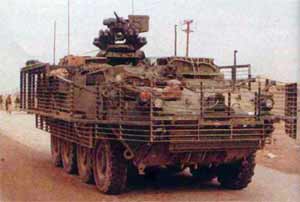 |
 |
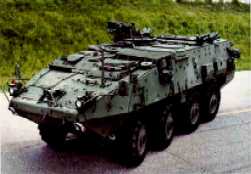 |
 |
 |
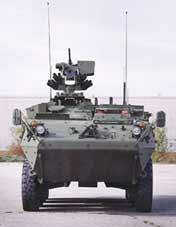 |
 |
 |
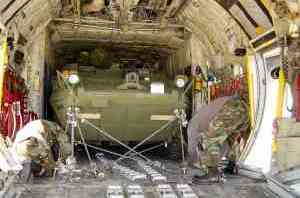 |
 |
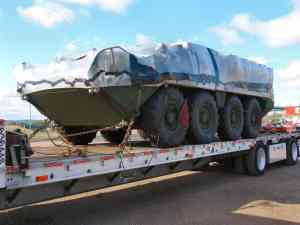 |
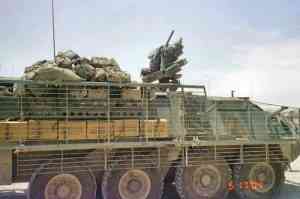 |
 |
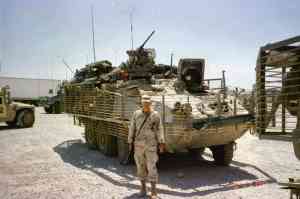 |
 |
 |
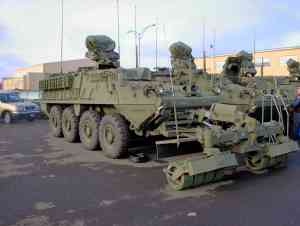 |
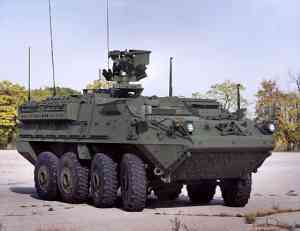 |
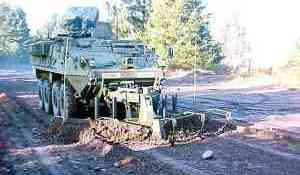 |
 |
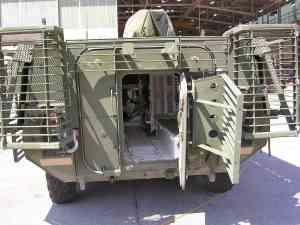 |
 |
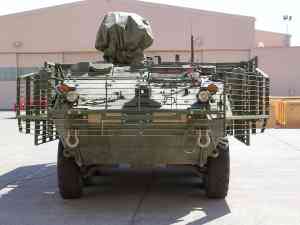 |
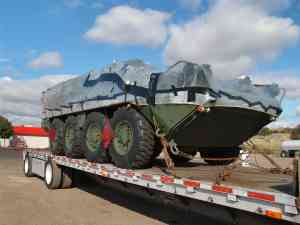 |
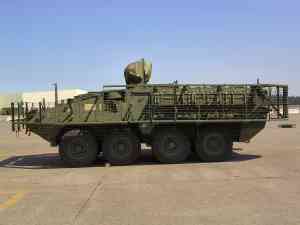 |
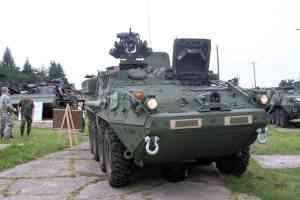 |
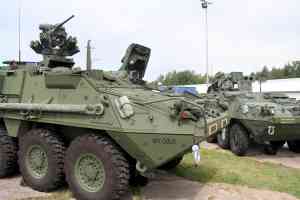 |
 |
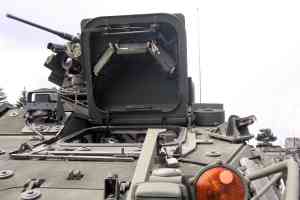 |
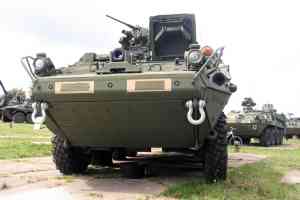 |
 |
 |
 |
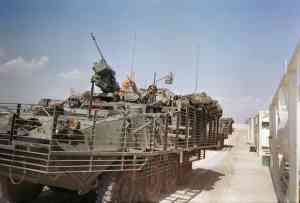 |
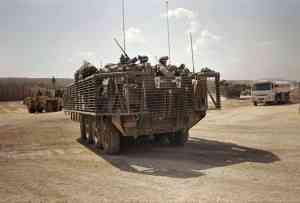 |
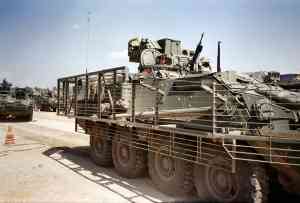 |
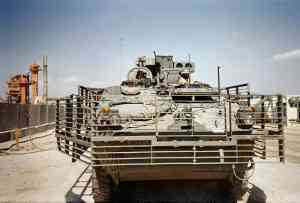 |
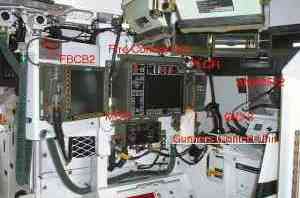 |
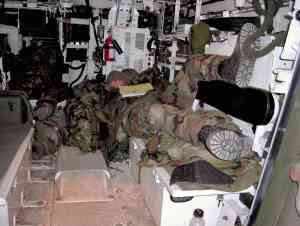 |
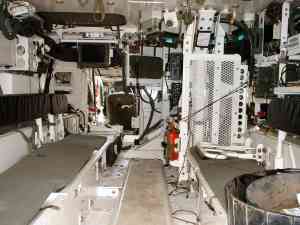 |
 |
 |
 |
 |


